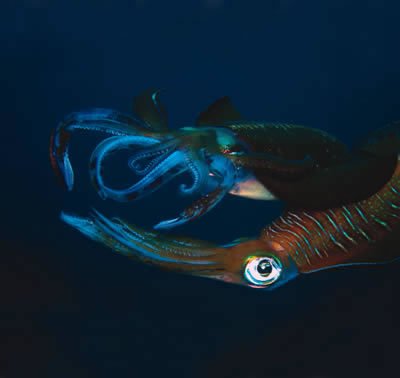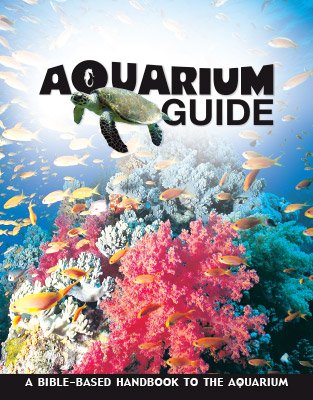Squid
The squid has two fins, a mantle, and a head that bears eight arms and two tentacles, each covered with suckers, which are armed with hooks or sucker rings.

Design
The squid, like other cephalopods, has design features for jet propulsion under water. It expands its mantle cavity and sucks water into its body, then relaxes its muscles, which in turn forces the water out through its siphon. The direction of the siphon can be changed in order to control the direction of travel.
Features
- The squid has two fins, a mantle, and a head that bears 8 arms and two tentacles, each covered with suckers, which are armed with hooks or sucker rings.
- The mouth of the squid is equipped with a sharp horny beak made of chitin.
Fun Facts
- The giant squid is one of the largest invertebrates ever to exist in the world’s oceans. It has one of the largest eyes of any animal in the world—over 1 ft (30 cm) in diameter.
- In 2003, a large specimen of the colossal squid was discovered. It is thought to be able to grow to 46 ft (14 m), making it the largest invertebrate.
- The skin of the squid is covered in chromatophores, which enable the squid to change color to suit its surroundings.
- The squid has three hearts.
- It has the ability to release a cloud of dark ink into the water when disturbed. This forms a “smoke screen” which camouflages its escape.
CLASS: Cephalopoda (octopuses and squids)
ORDER: Teuthida (squids)
FAMILY: 29 families in two suborders
SPECIES: About 500 species
Size: From 2 in (5 cm) to up to 50 ft (13 m),
including tentacles; average 24 in (60 cm)
Diet: Fish, crustaceans, and smaller squids
Habitat: All oceans worldwide
Aquarium Guide
With fun facts about more than 100 animals, this long-awaited Aquarium Guide includes beautiful pictures and reveals the incredible facts and design features that point to our amazing Creator. This handy size guide is excellent for school field trips and family trips to your favorite aquarium!
Browse Kids Book- © 2024 Answers in Genesis
- Privacy Policy
- Contact
- About

